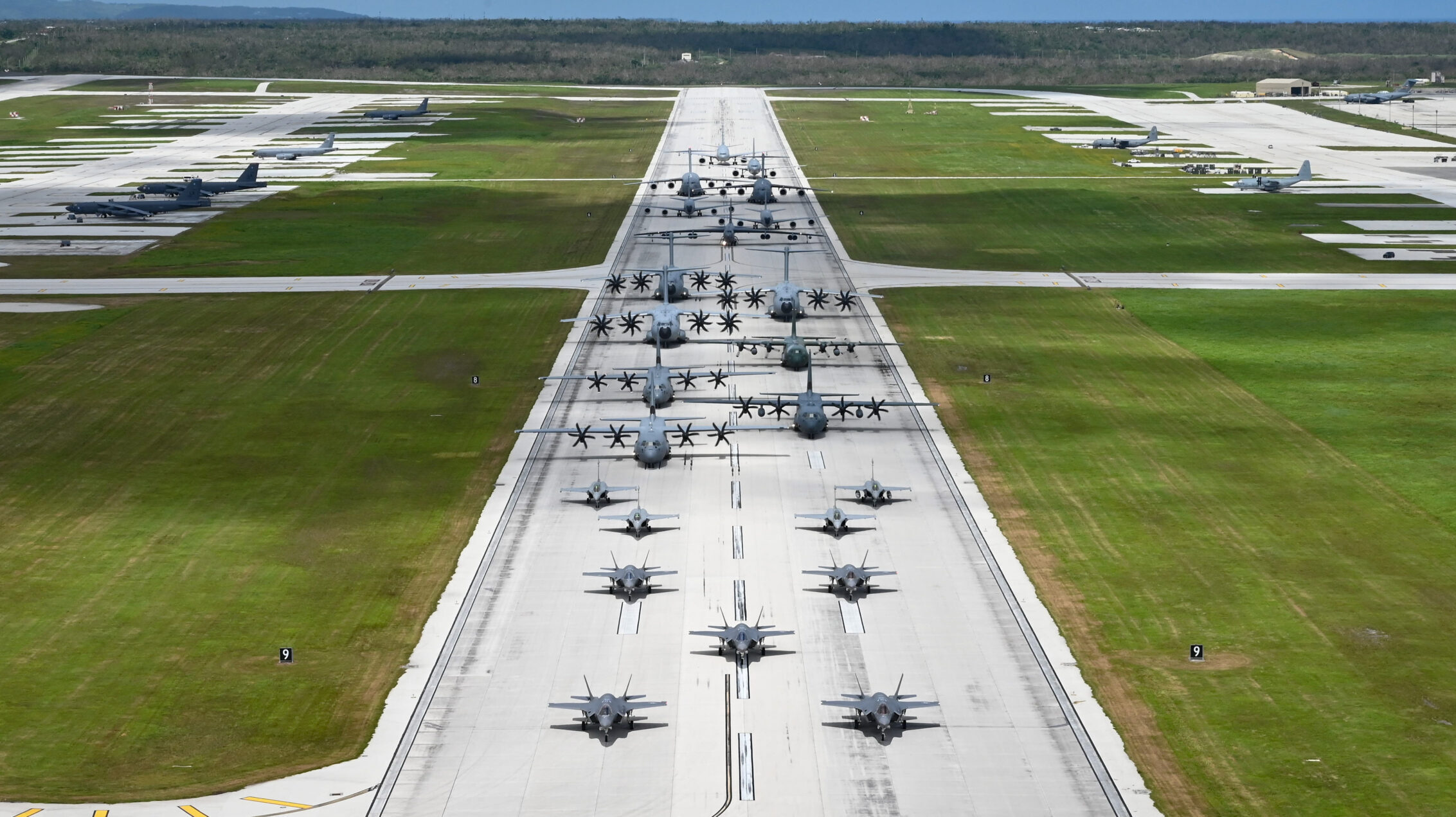MICHAEL MARROW
 WASHINGTON — Following the conclusion of Air Mobility Command’s (AMC) largest readiness exercise in its history held for the first time in the Indo-Pacific, officials are starting to unpack lessons learned, with a key takeaway being the need to “refresh” Air Force doctrine to better coordinate logistics forces, according to a top service official.
WASHINGTON — Following the conclusion of Air Mobility Command’s (AMC) largest readiness exercise in its history held for the first time in the Indo-Pacific, officials are starting to unpack lessons learned, with a key takeaway being the need to “refresh” Air Force doctrine to better coordinate logistics forces, according to a top service official.“There’s definitely some refresh that needs to take place… There’s some refreshing of Air Force doctrine, probably some joint doctrine, and that’s some of our intent in getting after the institutionalization of the command and control of GAMSS forces,” Maj. Gen. John Klein, commander of the Air Force Expeditionary Center, said during a virtual discussion hosted by the Air & Space Forces Association on Thursday. GAMSS stands for the Global Air Mobility Support System, the Air Force’s troops and assets that provide ground support for mobility operations.
Klein explained that two of the biggest lessons from the Mobility Guardian exercise last month — involving some 3,000 people and 70 mobility aircraft from US and allied forces, with a total of seven countries participating — largely fall into the areas of commanding and controlling forces and connectivity.
Specifically, Klein said AMC gained insights about simultaneously steering deployments through two air operations centers: the 618th Air Operations Center at Scott Air Force Base, the Air Force’s component of US Transportation Command tasked with global missions, and then the theater-based 613th Air Operations Center at Joint Base Pearl Harbor-Hickam.
How those two entities coordinate forces might need some tweaking, he suggested, though he cautioned officials should avoid “reinvent[ing] the wheel.”
“So when you have this mix of [major command]-retained [operational control] for those forces coming into another combatant commander’s theater, where he’s got his own theater-assigned forces, you can imagine that there may be some differences,” he explained, though he did not detail exactly how the relationship between the two might change.
Commanding and controlling forces requires them to stay properly connected, he said, another area where the exercise revealed challenges.
“There’s work to be done on the connectivity piece,” he observed, placing importance on ensuring units are properly equipped with secure communications. “Whatever we can do to provide connectivity solutions for our airmen so that they can employ in this vast theater in a dynamic and agile way, is where we need to head.”
The exercise largely did not offer any surprises, Klein said, because officials had anticipated many potential issues in advance. Ahead of the exercise, the Air Force stated in a press release that refining the command and control of GAMSS forces would be a leading focus of the exercise. “What those lessons learned have given us though, is really a lot of fodder and validation of the previous work to be able to craft some initiatives throughout this next year to close those gaps,” said Klein.
And to prepare for a fight in the Indo-Pacific, Klein further said Air Force personnel need more experience deploying to the region after years of regular runs to the Central Command area of responsibility in the Middle East so that they can better learn how to operate in an environment less familiar to them. Mobility Guardian exercises were previously held in the United States.
“The deploy portion of getting into theater, there’s some stiff and creaky, sclerotic muscles there that we need to work out,” he said. “And that comes through practice, that comes through repetition.”
No comments:
Post a Comment